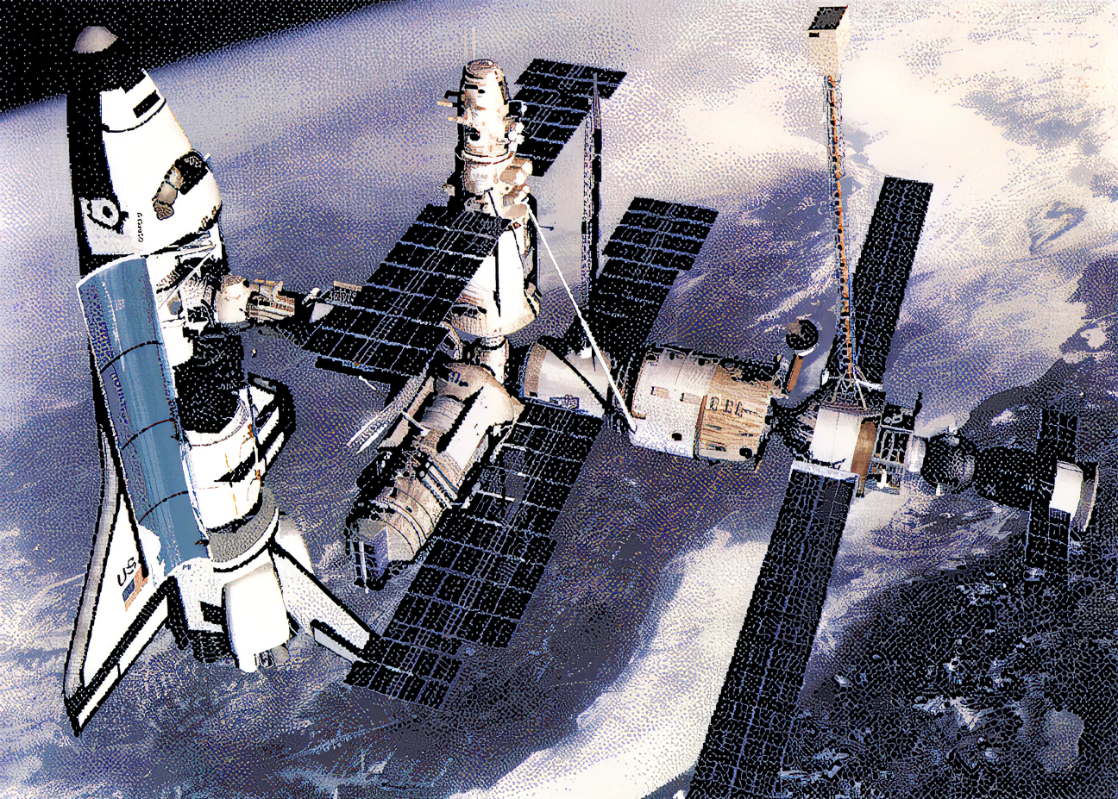
On June 29, 1995, the American space shuttle Atlantis docked
with the Russian space station Mir to form the largest man-
made satellite ever to orbit the Earth.
This historic moment of cooperation between former rival
space programs was also the 100th human space mission
in American history.





















